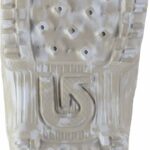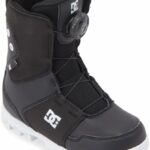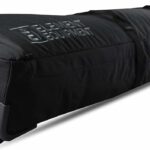Here’s a fresh thought for you. Let’s have a little throwback and look at the shifts and developments in the world of snowboarding over the last decade. It might’ve been a hobby or a passion, no matter, but the intriguing part is how technology and innovation have reformed and reshaped snowboarding equipment, in particular, snowboards. The article “Have Snowboards Changed In 10 Years?” takes you through a journey examining if the snowboards you loved a decade ago look and perform the same or if they have gone through any transformation.
Snowboard Construction Evolution
Over the past few years, there has been a great evolution in the construction of snowboards. The changes have come about from a need to enhance the experience of boarding for people of various skill levels and styles. Let’s dive into the core changes and how they affected your boarding experience.
Changing Makers’ Materials
Once, snowboards were made mostly from wood and metal, but advancements prompted manufacturers to start incorporating materials such as carbon fiber and Kevlar. The shift is aimed at making the boards lighter but stiffer, increasing performance without compromising durability. Now, you can find snowboards constructed with an array of materials specifically engineered to improve structural integrity or performance capabilities of the boards.
Influence of Technology on Manufacturing
The influence of technology on snowboard manufacturing cannot be overstated. Innovative approaches such as computer-aided design and 3D printing have played pivotal roles in shaping this industry. These advancements have allowed for precise blueprints and customization options that simply weren’t possible before. Now, it’s easier than ever to create a snowboard tailored to your specific needs and nifty design desires.
Impact on Performance and Ride
The evolution of snowboard construction has had a dramatic effect on how the board performs and how the ride feels. With the introduction of new materials and manufacturing technology, snowboards are lighter, faster, and provide better control. These enhancements have made it easier for novice boarders to learn the sport and for pros to push boundaries for what is possible on a snowboard.
Board Designs and Shapes
Another area where snowboarding has undergone significant evolution is in the designs and shapes of the boards. From traditional to contemporary designs, the aesthetics and performance effects of these changes have given riders diverse choices to match their riding style.
Traditional Vs Contemporary Shapes
Traditional snowboard shapes were symmetrical, making them perfect for freestyle and all-mountain riding. But with the advent of contemporary designs, asymmetrical and directional boards are becoming popular. While conventional designs are still preferred by some, contemporary designs offer advancements in maneuverability, speed, and control that many riders find appealing.
Introduction of Asymmetrical Boards
Asymmetrical boards – a new design that enhances heel-side turns, has been a radical departure from conventional, symmetric board designs. Having different profiles for the heel and toe edges allows for more natural body movements during carving, offering you a more enjoyable ride down the slopes.
The Emergence of Powder Specific Boards
In response to riders’ needs for better float in deep powder conditions, powder-specific boards have emerged. These boards have unique design aspects including wider noses, tapered tails, and set-back stances, all of which are primed to make your next snowfall riding experience unforgettable.
Snowboard Length and Width Changes
Snowboard dimensions – length and width, have also changed dramatically over the years, further redefining the riding experience.
Redefining of ‘Standard’ Dimensions
A few decades ago, long and narrow boards were the norm. Then, the market began seeing shorter and wider designs that offer more stability and quicker turns. This redefinition of ‘standard’ dimensions caters to a broader range of riders’ sizes and styles.
Impact on Snowboarding Styles
Shorter, wider boards allow for a more playful and responsive ride, which is perfect for freestyle riding. Meanwhile, longer, narrower boards offer stability at high speeds, making them ideal for freeriding and carving. The evolution of board dimensions has allowed snowboarding styles to be fittingly specific, enhancing the overall experience.
Effect on Maneuverability and Speed
The change in snowboard dimensions significantly impacts the board’s maneuverability and speed. Shorter boards are easier to manipulate, making them great for tricks and tight turns. Longer boards, on the other hand, maintain speed better and provide a smoother, more stable ride at high speeds.
Advancements in Core Technology
Your snowboard’s core is its heart, defining the board’s overall feel and functionality. And believe it, the core’s technology has come a long way.
Evolution of Core Materials
Snowboards used to be constructed with simple wooden cores. But advancements in technology have brought about cores made of composite materials, offering better weight, performance, and durability. Today, you’ll find cores made from a blend of wood and other materials like aluminum honeycomb, carbon fiber, or Kevlar.
Changes in Manufacturing Techniques
Previously, most snowboard cores were cut out of a solid piece of wood. Today, manufacturers press layers of wood together to provide better control over the board’s flexibility and strength. Some even go for profiling, where the core is milled to different thicknesses to adjust the flex across the length of the board.
Impact on Flexibility and Durability
These developments have had a tremendous impact on the snowboard’s flexibility and durability. With the combination of different materials and manufacturing techniques, boards are now much more compliant to the demands of different riding styles. And not to forget, the boards have become more resistant to the wear and tear of extreme snowboarding.
Advancements in Board Flexibility
Understanding board flexibility is critical to your riding experience and there have been significant advancements in this area.
Influence of Rider’s Style on Flex
Depending on a rider’s style, they may prefer either a soft, medium, or stiff flex. Freestyle riders typically prefer a soft to medium flex for its maneuverability in tricks and jumps. On the other hand, free riders and racers generally gravitate towards a stiffer flex for stability and control at high speeds.
Changes in Flex Rating Systems
Snowboard manufacturers have developed flex rating systems to help riders choose the appropriate board. Over time, these rating systems have become more intricate and comprehensive, reflecting a variety of flex patterns such as tip-to-tail, torsional, and center flex.
Board Flex Versatility
The changes have resulted in significantly improved versatility in board flex, aiding the rider to pick a board best suited for their style and the conditions they ride in. Whether you enjoy making hard carves or floating on powder, there’s a board out there with the perfect flex for you.
Innovations in Snowboard Bindings
Bindings are fundamental components that connect riders to their boards. Let’s look at their evolution over time.
Traditional Vs Modern Bindings
Traditional strap bindings were all the rage until the arrival of modern step-in and rear-entry bindings. The modern versions offer ease of use and versatility, accommodating riders of differing styles and preferences.
Impact on Rider’s Performance
Modern bindings have significantly impacted a rider’s performance. They provide quicker and easier entry and exit, improved responsiveness, and greater comfort. They have transformed how riders connect with their board, ultimately enhancing their control and feel on the mountain.
Influence of Technology on Binding Design
Just as technology has influenced snowboard construction, it has similarly played a role in binding advancements. New materials and design techniques offer lighter and more durable bindings, providing an enhanced snowboarding experience.
Revolution of Snowboard Boots
Boots have undergone a significant revolution in recent years, dramatically impacting a rider’s comfort and performance on the slopes.
Boot Design Overhaul
Early snowboarding boots were rigid and restrictive. The modern counterparts, on the other hand, boast an exceptional design overhaul with more comfortable materials, functional lacing systems, and adjustable flex.
Enhancements in Comfort and Performance
New materials and anatomical designs have greatly enhanced boot comfort, allowing for all-day rides without sore feet. Innovations in performance aspects, such as better sole traction and improved board feel, have given riders new realms of control and response.
Influence of Material on Boot Quality
Materials used in boot construction have an unquestionable influence on the quality. Recent developments have brought boots with materials that offer better insulation, durability, and weight savings—all contributing to a heightened boarding experience.
Snowboard Graphics and Aesthetics
Graphics and aesthetics of snowboards have also evolved significantly over the years. They have transformed from mere afterthoughts to significant aspects of board design.
Emergence of Custom Designs
With the boom of personalization, riders can now equip themselves with custom graphic boards that stand out on the slopes. This emergence of custom designs caters perfectly to the riders who view their boards as extensions of their personalities.
Impact of Graphics on Market
Snowboard graphics have played a big role in the marketing and sale of boards. Eye-catching designs can be a deciding factor for buyers, meaning brands continue to push the envelope on their aesthetic offerings.
Aesthetic Influence on Branding and Advertising
Unique and appealing graphic designs have become a powerful tool for brand positioning in a crowded marketplace. Brands are seen to be leveraging their designs in advertising campaigns to connect better with their target customers, making aesthetics a critical player in the snowboarding industry.
Board Pricing and Marketing
The last decade has witnessed a significant shift in the pricing and marketing of snowboards. Let’s dissect these changes.
Pricing Evolution in Last Decade
The pricing of snowboards has seen an upward trend over the past decade. This can be attributed to advancements in technology and materials that warrant higher costs. Nonetheless, there’s a snowboard for every price range, whether you’re a beginner on a budget or a seasoned rider going for top-tier gear.
Role of Branding in Snowboard Market
Branding plays a huge role in the snowboarding market today. Brands are not just selling snowboards, they are selling experiences, lifestyles, and aspirations. Their marketing strategies focus on communicating these aspects compellingly to appeal to their target demographic.
Future Projections for Snowboard Pricing
Given the continual advancements in snowboard technology and design, it is likely that snowboard prices will continue to rise. However, the wide range of board options available guarantees that there will always be affordable options for those who prioritize cost.
Implications on Snowboarding Sport and Culture
The changes in snowboard design and technology have had significant implications on the sport and culture of snowboarding.
Changes in Rider Skill Levels
Improvements in snowboarding gear have led to an evolution in riding skill levels. Today’s riders can more accurately control their boards, perform tricks with greater precision, and navigate diverse terrains. The learning curve for beginners has also been considerably reduced.
Influence on Snowboarding Competitions
Changes in board technology and design have inevitably influenced competitive snowboarding. Today’s competitions feature more complex tricks, faster speeds, and more challenging courses, reflecting the sport’s progress over the years.
Future Predictions for Snowboarding Sport
With technology showing no signs of slowing down, the future of snowboarding is expected to be incredibly exciting. Boards will continue to be lighter, stronger, and more customizable, leading to even greater feats on the slopes. Competitive snowboarding will reach new heights as riders continue to push boundaries, and as always, snowboarding culture will evolve in step with these changes.
- What Snowboard Bindings Should I Get? - January 23, 2024
- What Size Screws For Snowboard Bindings? - January 23, 2024
- How To Snowmobile On Water? - January 23, 2024










